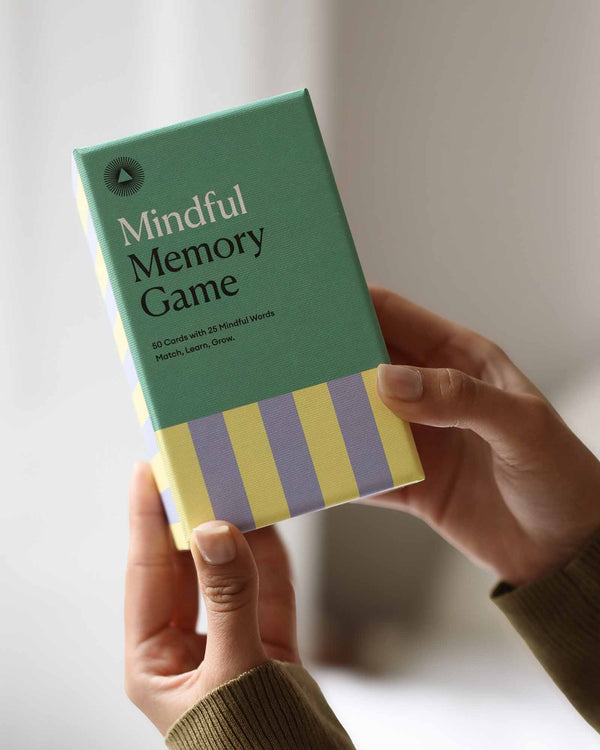No Worries: A Guide to Managing Fear and Anxiety
by Kinga Lewandowska
Reality can be a lot to bear. It’s never more apparent than when we draw our first breath upon arriving into this world—anything might be overwhelming to a newborn baby. So we let out a scream because the lights are too bright, there are faces around us we don’t yet grasp the concept of, and we very quickly need to learn how to live with dozens of new sensations that we’ve never experienced.
Still, that very first cry is highly encouraged. It serves as proof that the newborn can breathe properly and their freshly formed and tender respiratory system works well. That cry is both a distress call and a positive affirmation of health and well-being.
All emotions, feelings, and sensations within us are useful data. Even though it’s hard to see it sometimes. When you struggle with arachnophobia, fret over a high-stakes presentation at work, or grapple with painful family issues, learning from discomfort is the furthest thing from your mind.
We’ve all been there. Invisible chains of dread holding your limbs in a tight grip, it’s difficult to breathe, your heart wants to jump out of your chest, and the ground will split open under your feet any second. At least it feels like it.
One look around any exam room will tell you that some of us naturally stress more easily than others, yet all of us experience mental discomfort at some point in our lifetime. It’s inevitable. Fret not―while anxiety, fear, worry, and panic might look like the four horsemen of the apocalypse, we know how to banish them to whence they came.
You’ll know it when you feel it
Anxiety, fear, and worry are related emotions and might evoke similar stress reactions such as the fight-or-flight response. However, there are some subtle differences between these states. Let’s break it down:
Anxiety
Anxiety is a sustained state of dread and unease, often without a clear source. For example, when you’re chronically worried about your job security. Anxiety can be ambiguous, unlike…
Fear
Fear, which is an emotional reaction to an identifiable threat or perceived danger, such as panic when encountering a bear. Fear may cause anxiety, and anxiety may cause fear.
Worry
Worry involves repetitive negative thoughts about potential future problems. For instance, obsessing over what could go wrong during your wedding ceremony.
Anything might trigger anxiety, fear, and worry because there are as many stressors as there are people on the planet. While we deal with certain universally upsetting situations (as extreme as war or poverty), we each carry different personal traumas, face distinct challenges, and differ in personalities and coping mechanisms. Hence, what triggers you might feel like a breeze to someone else, and vice versa.
So how do we tame this looming dread? What do you do when your knees start shaking, your palms get sweaty, you’re nauseous, and it feels like you’re having a heart attack? Read on.
Befriend the monster under your bed
Worrying is an out-of-body experience. It takes you far away from where you are, often into some grim version of the future that might never come to pass. Dread shatters the present moment into tiny little pieces and reality, severely fragmented, no longer presents itself as a coherent picture. To glue the bits of your sanity back together, you need to control your emotional turmoil.
Before we save your hair from going grey with worry, we’d like to preface this section with a word of reassurance: seeking professional help is always a good idea. Fear and anxiety are no joke. If you feel that your heart is getting heavier and your mental discomfort could evolve into a phobia or a disorder, schedule an appointment with a trained professional. An ounce of prevention is worth a pound of cure, always.
On that note, the best prevention is awareness. Observe what agitates you, what makes your heart skip a beat, what puts you in any state of unease. Note down anything you suspect of disturbing your inner peace, analyze it, become the scientist of your well-being. It is infinitely easier to deal with a threat if we know its shape.
Identifying your triggers will put you on the path toward healing. Maybe you are under too much pressure at work while facing financial strain? Perhaps your health is compromised? Or maybe the lingering ghosts of past traumas make it hard for you to sleep peacefully? Look into it. Ponder. Pinpoint and confront your issues to reclaim your equilibrium.
However, if you find yourself in a state that is less than severe and you need to restore yourself to normalcy swiftly, there are a few quick self-soothing techniques and ideas that might help:
1. Cognitive defusion ― as in, distance yourself from your thoughts. For example, grab your house keys and assign each anxious thought to a specific key on the keychain. Whenever you use that key, recognize that you can carry the thought without always thinking it and letting it control your actions.
2. Cognitive restructuring ― challenge your thoughts. Instead of jumping to conclusions, question a particular belief to encourage a more realistic view. For instance, if you worry your partner will break up with you, try seeing things from another angle. After all, a small argument doesn't mean the end of a relationship.
3. Outdoor therapy ― Mother Nature is soothing, she knows how to untangle your knots. Sometimes the simplest solutions are the most effective. Go take a walk outside and dive into the greenery, it’s the perfect way to meditate when you’re too agitated to do it the old-school way. Nature is healing and studies continually prove it. Did you know there’s evidence that nature walks lower the risk of depression? And so does physical exercise, you’d be killing two birds with one stone. However, please refrain from harming any birds. Mother Nature would not be pleased.
4. Hugging ― connecting with our loved ones through touch comes with a myriad of benefits. Among others, it releases oxytocin (the love hormone), lowers blood pressure, and even reduces pain. What’s more, cuddling with your pets works similarly. Are you near your spouse? Or maybe there are friendly dogs around you? Hug them to feel restored. Pro tip: tree-hugging may also calm you down as studies show its potential to reduce depression, anger, tension, and fatigue.
5. The 333 rule ― you can treat it as a game for added fun, but even if you’re not in the mood at this particular moment, the 333 rule is still a potent distraction technique. Look around you and name three things you see, three sounds you hear, and move or touch three things you can get your hands on. There’s no official research into the 333 rule, yet it does feel like an effective tool to take your mind off anxiety.
Alternative ideas: do a short language lesson on Duolingo, read a poem, sing a song, recite a shopping list in your head, repeat a positive affirmation (e.g. I am safe, I am loved, the world is a friendly place), take a deep breath and count to 9, then 24, anything other than 10―it’s too predictable.
6. Screaming therapy ― newborn babies come to this world loud and proud, with no filter. Screaming is a natural reaction and a quick release of negative emotions. It has also been used in therapy since the 1960s. If you live in a rural area, travel to the remotest corners of a park or a field, and if you live in the city, we recommend positioning yourself at a metro station to scream when the train passes you by. You know, when it’s loud anyway so you don't disturb somebody else’s peace. But go on, let it all out.
7. Fika ― in other words, take a break. Fika is the Swedish custom of enjoying a coffee and a treat with friends or family. Is there anything a cup of freshly brewed beverage of your choice and a cinnamon bun couldn’t fix? Ok, there are a few things, but it works miracles when it comes to mental health. Not only that, the added benefit of talking therapy with your loved ones also has the power to get you back on your feet.
And here’s an unpopular opinion: visit your comfort zone sometimes. We are always advised to stay out of it but when you’re anxious and worried, a bit of what makes you feel cozy and secure will calm your nerves and restore your courage. Go back to what is familiar.
8. Rewrite the narrative ― be it obsessive thoughts, shattered nerves, anxious feelings, or negative emotions―picture them as something silly, give them nonsensical names like Wollywillywoo, ridicule them in drawing―reframe the situation. For instance, are you a bundle of nerves right now? Picture that bundle as a ball of wool and throw it to an imaginary cat. Can you see it playfully tossing it in its paws? Do you now want to play, too? Then our job is done here (wink-wink).
9. Journaling ― speaking of writing, as you may already know, we are huge advocates of many forms of journaling. It’s one of the most effective strategies for disposing of negative thoughts and emotions. It’s a deep clean technique for the mind and heart, if you will. Our philosophy is: when in doubt, write it out. This method can be a long-form, long-term solution, but it can also be a quick fix―simply write two or three lines, let your worry rest on a page, and see what happens in a matter of minutes.
The ‘Let Them’ Theory
So much of our daily worrying comes from societal pressures. Constantly trying to live up to somebody else’s expectations is draining. And then we subconsciously do it to others. We have built a very structured world that operates like a machine. Yet, we are no machines, we are very much human, soft and tender, and imperfect.
Mel Robbins, motivational speaker, author, and life coach, proposes a simple mindset shift called the Let Them Theory:
“If your friends are not inviting you out to brunch this weekend, let them. If the person that you’re really attracted to is not interested in a commitment, let them. If your kids do not want to get up and go to that thing with you this week, let them”, she says, and adds, “So much time and energy is wasted on forcing other people to match our expectations.”
Let go and let them.
Every cloud has a silver lining
When it comes to negative emotions, let them in, and let them, too. We need all of our emotions, good and bad, to keep our inner balance in check. After all, anxiety, fear, and worry still to this day protect us from metaphorical sabertooth tigers. These feelings keep us motivated, prepared, and focused. They sharpen our senses and communicate to us what is and is not important to us.
They may also be a sign that you care―about that project that kept you up at night for a month, or that special someone you’re nervous to ask out on a date. All emotions are valuable data, all emotions make us human. Befriend them and let them.
“My philosophy is that worrying means you suffer twice.”
― J.K. Rowling









